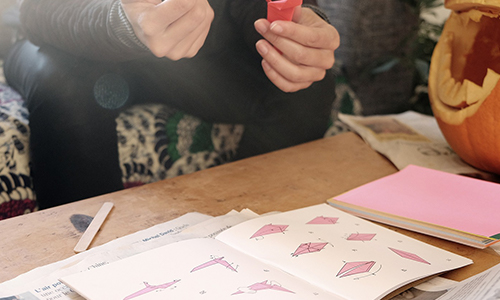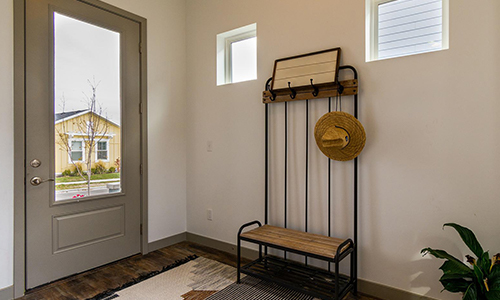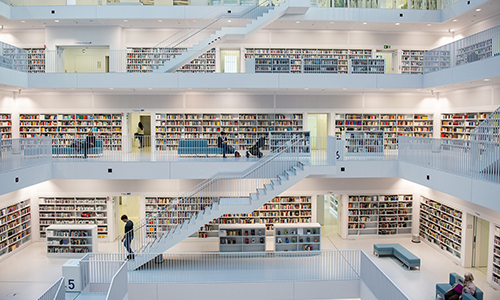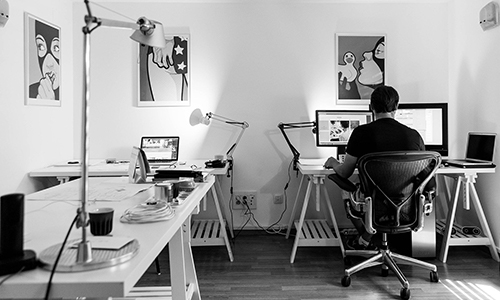Don’t be left behind with outdated design as the world moves forward and creates more functional interior spaces. Knowing how the global COVID-19 pandemic has modified the way people see interior design will help you remain relevant in the profession.

asidga.org gathered the following information about how the COVID-19 pandemic has reshaped interior design.
In March of 2020, world markets, cultures, and nations came to a grinding halt with lockdowns, mask mandates, social distancing, and travel restrictions. Significant culture changes happened in the workplace and school systems; working and learning from home became the new model that kept businesses afloat, children studying, and entire populations health conscious. As the world changed, so did interior design, and here’s how:
The concept of working from home has forced us to reconsider the notion of housing as mere “shelter.” People are investing more and more in their personal (home) space to have more comfortable, flexible, and specialized zones for specific household activities and routines, ranging from work to school or recreation time with kids.
People have abruptly realized that they need to build out specific zones for these activities, and some figured out their home isn’t adequate for that, whether it’s just physical space or something more nuanced.
With workforces slowly returning to the workplace, business models in companies worldwide have adopted a hybrid work model, and interior design has had to absorb the reality that remote work and study are here to stay.
Homeowners are now dedicating spaces to their work hours and installing them more reminiscent of their “traditional office” so they can still leave the workday behind at the shift’s end.
Another interior design modification is the installation of a pleasing aesthetic background for Zoom calls and virtual meetings. Lighting, attractive artwork, plants, and no clutter are all components people are considering when designing and decorating a video call space.

Considered a luxury in pre-pandemic times, the spare room wasn’t given much thought or consideration. However, once we were obliged to stay home, attics, garages, dining rooms, and spare bedrooms took on a whole new meaning as they were quickly converted into new spaces, like home offices, craft rooms, and study centers.
The home gym has become a more prominent addition due to social distancing and is now a highly desired space since people want to continue their workout/health journey in the comfort of their own home.
Accommodating guests and visiting family has taken a new form as these groups are moving outside. Fresh air and a gentle breeze just feel safer amidst the paranoia of the pandemic. Subsequently, yard spaces are being occupied with larger decks and patios.
This newfound affection for the outdoors has changed how these spaces are designed and set up. Tables, chairs, sofas, fireplaces, entertainment centers, even plumbing installations, etc., are being included to offer a feel of extension vs. separation.

Entryways, foyers, and mudrooms are receiving extra attention as people become more conscious of maintaining sanitary or clean areas and pronounced divisions between outdoor and indoor spaces.
These spaces allow one to enter a home, take off their scarves, coats, and shoes, and wash their hands. These spaces are nothing new, but their design is developing to make them much more functional. The formerly awkward request for a guest to remove their shoes or wash their hands is quickly becoming the accepted norm in household etiquette.
With travel and vacation plans still largely on hold, homeowners are looking for creative ways to make their homes feel more like a spa, prioritizing retreat-like bathrooms and areas for relaxation that get their tone from hospitality design.
With our daily lives spent mostly at home, the necessity of designing separate spaces for different activities has yielded the supercharged desire for open floor plans. Curtains, screen walls, partitions, and other eclectic dividers help isolate spaces for their intended use.
In this article, you discovered how the global pandemic has caused interior designers to adapt their concepts of interior and exterior space utilization.
Knowing how interior design has adapted to a world spending significantly more time at home will help you remain current in the interior design field and aid you in delivering the appropriate spaces your clients desire.
Ignoring pandemic-influenced interior design modifications will leave you struggling to comprehend the new needs and required flexibilities of the modern home.
Sources:
news.vcu.edu/article/Shrunken_worlds_reconfigured_spaces_How_the_pandemic_is_altering
design.lsu.edu/interior-design-pandemic/
news.fiu.edu/2020/home-design-in-the-age-of-social-distancing
forbes.com/sites/forbestechcouncil/2021/12/03/three-ways-covid-19-has-affected-the-interior-design-market/
Before you use or open a space to the public, avoid the embarrassment of poorly arranged interior space and design. Knowing why interior design is so important will help you work with your interior designers to create a flowing and functional space.

asidga.org gathered the following information about interior design, interior designers, and the essential work they do.
Interior design can be described as the art and science of enhancing a building’s interior to achieve a healthier and more pleasing environment for people using that space. An interior designer is someone who plans, researches, coordinates, and delivers enhancement projects.

Interior design is centered on how we experience spaces. It’s an influential and essential part of our daily lives and profoundly affects how we live, work, play, and heal. Comfortable and practical homes, functional and safety-conscious workplaces, and beautiful, inviting public spaces all owe their subtle and sometimes pronounced design to an interior designer.
Interior designers create spaces that anticipate our wants and needs and appeal to our senses while relying on a broad set of skills and technical know-how. Today’s top-tier interior designers work closely with contractors, architects, engineers, furniture dealers, and businesses and homeowners.
Interior designers make indoor spaces highly functional, safe, and esthetically beautiful by determining space dimensions and requirements then selecting essential and decorative items that serve the space and its occupants best.

No. The principal difference between decorators and designers is education. To become an interior decorator, you do not need any level of education or training. If you enjoy combining colors, fabrics, and furniture, print your business cards and proclaim yourself an interior decorator.
When becoming an interior designer, you will likely be required to earn an associate or bachelor’s degree from an accredited educational institution or interior design school before you are permitted to work in the interior design field. An interior designer designs and creates functional living and working spaces, lounge areas, and any other space people may require. These spaces may be located in homes and apartments, offices, theaters, hospitals, and more.
The following milestones and achievements are required for someone to use the title and act as an interior designer:
1. Earn an Associate or Bachelor’s Degree in Interior Design – If you are a creative person or have some sort of artistic ability and someone who is particularly intrigued by interior design, an associate’s degree program might be the perfect way to learn the fundamentals. From here, you can continue your education if you decide an interior design career is the career path you want to take.
Earning a bachelor’s degree will take things a step further and make you a more well-rounded interior designer. You’ll learn more about the aesthetic, technical, and business skills you need to thrive in the field. A bachelor’s degree program will build on the skills you would have learned in an associate’s program.
2. (If Required in Your Area) Get an Interior Design License by Passing the National Council for Interior Design Qualification Exam – NCIDQ Certification is the industry’s premier indicator of proficiency in interior design principles and a designer’s unwavering commitment to the profession.
For further information on NCIDQ testing and certification, visit cidq.org
3. You Need Experience – Becoming a master interior decorator will require you to hone your skills over time and through practical experience. Using your own home to practice on, then onto the homes of friends and relatives provide opportunities to make and learn from mistakes while improving your skills.

Apprenticing under an expert designer is a superb option for gaining practical experience. The guidance and supervision of a seasoned professional is an ideal way to learn and improve your skillset.
4. Build Your Portfolio – Making your skills attractive to potential clients is done by building a strong portfolio. Take high-quality photographs of all of your work and arrange them on your website, in a digital presentation, and in an old-school printed book (leaving something in your prospective client’s hands is a powerful way to declare your skills and value).
This demonstrates what you’re capable of and presents you as a well-organized professional. Some of your projects should be shown from sketch to project completion, providing insight into your work process.
Secure an Interior Design Job Or Go to Work for Yourself – As an employed or independent interior designer, you will have the opportunity to specialize in a particular design field, whether residential, commercial, environmental interior design, and many others.
In this article, you discovered what interior design consists of, what interior designers do, and the immeasurable role interior design plays in our everyday lives.
Understanding the role interior design plays in nearly every space and environment where you live, and work will help you appreciate the ingenuity and talent of interior designers.
Remaining oblivious to the details and structure of a well-designed space prevents you from taking advantage of the often ingenious amenities it has to offer.
Sources:
nysid.edu/academics/what-is-interior-design
bls.gov/ooh/arts-and-design/interior-designers.htm
newschoolarch.edu/blog/how-to-become-an-interior-designer/